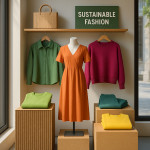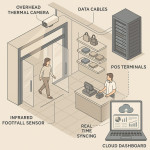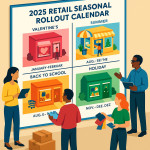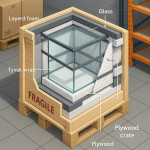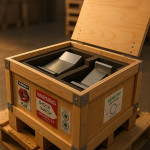Write a retail brief that empowers visual merchandisers to elevate storytelling
A concise, inspiring retail brief is the spark that lets visual merchandisers turn shelves and windows into memorable narratives. Follow this guide to build a brief that aligns business goals with immersive storytelling and gives your team everything they need to delight customers—and drive revenue.
Why a storytelling retail brief beats a simple product list
Shoppers remember feelings, not SKU codes. A retail brief centred on storytelling helps visual merchandisers craft experiences that:
- Boost dwell time and average basket size.
- Strengthen brand differentiation in crowded malls.
- Create social-media-ready moments that extend reach beyond the store.
Source : NRF Retail Research 2023
Core sections of a storytelling-driven retail brief
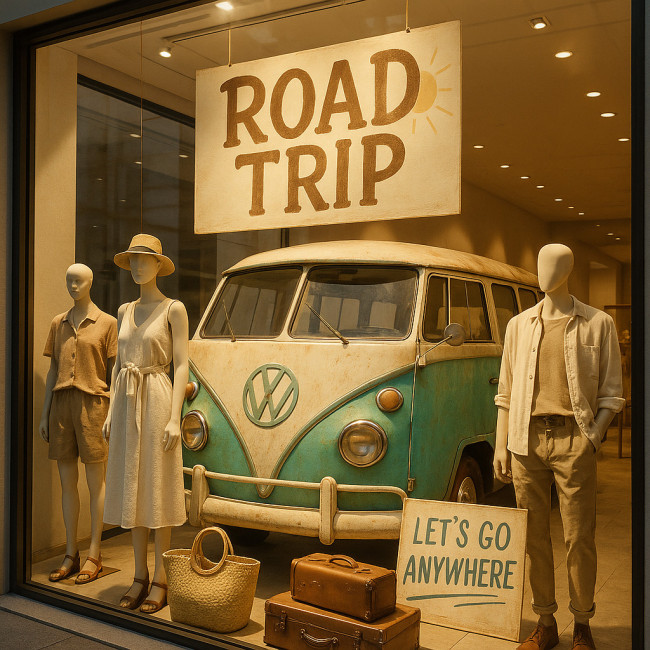
Before you dive into the granular table below, picture the brief as a compass guiding every creative and operational choice. Each section—objective, audience insight, visual assets, KPIs, and more—acts like a cardinal direction that keeps your merchandising team on course even when deadlines tighten or budgets shift. By clearly articulating the “why” behind the display, mapping the emotional triggers that resonate with your core shopper, and anchoring the concept in measurable outcomes, you create a shared language for marketing strategists, designers, window dressers, and installers alike. This comprehensive alignment minimises costly reworks, accelerates decision-making, and ultimately transforms a static product presentation into an immersive brand universe that sparks curiosity, drives footfall, and fuels social buzz beyond the storefront.
| Section | Traditional Brief | Storytelling Brief |
|---|---|---|
| Objective | “Launch new product line.” | “Transport shoppers into a coastal road-trip universe to launch our summer collection and raise ATV by 15 %.” |
| Audience insight | Women 25-45. | Millennial explorers seeking escapism and sustainable choices. |
| Key visual assets | Pack shots, price tags. | Hero prop (vintage van), colour palette (sun-bleached hues), typography (hand-painted signs). |
| KPIs | Units sold. | Dwell time, social shares, footfall uplift, ATV. |
1. Crystal-clear business objective
State the commercial goal upfront. Example: “Increase footfall by 10 % during Fashion Week pop-ups and convert browsers into loyalty-app sign-ups.” Tie every storytelling element back to this target.
2. Audience personas and emotional triggers
Describe who will engage with the display and what they crave emotionally. Include demographic data, preferred social platforms, and style references. Link your brief to visual merchandising KPIs they already monitor.
3. Narrative arc
Outline the beginning, middle, and end of the in-store journey. A proven arc might flow from intrigue at the window, immersion within focal zones, to product discovery near the fitting room.
4. Sensory & spatial guidelines
- Colour palette and lighting mood.
- Soundtrack cues or ambient sound levels.
- Signature scents or textures.
For advanced integrations, see how phygital shopfronts merge AR layers with lighting to heighten engagement.
5. Practical constraints
List budgets, installation windows, safety regulations, and prop reusability. Incorporate eco-criteria when relevant—your team can then consult the guide on eco-smart display materials to comply.
6. Key performance indicators
Move beyond “sales only.” Track story-centric metrics like:
- Dwell time per zone (sensor or Wi-Fi data).
- Hashtagged user-generated content volume.
- Footfall vs control period (learn more in tracking footfall ROI).
7. Asset delivery checklist
Provide die-cut dimensions, high-res logos, font files, and still renders. A clear checklist eliminates last-minute file hunts and lets merchandisers spend time refining the story instead.
Step-by-step process to craft your brief
- Kick-off workshop. Gather marketing, product, and VM teams for a 90-minute session to align on goals.
- Customer empathy mapping. Map desires, pain points, and moments of delight.
- Storyboarding. Sketch the shopper journey with simple frames. Free templates are available in the spatial design resource hub.
- Budget calibration. Balance dream concepts with cost realities. See our article on seasonal rollout calendars to forecast spend.
- Sign-off & distribution. Circulate the final brief as a single PDF plus editable asset folder. Store it in a shared drive for easy reference on install day.
Common pitfalls—and how to avoid them
- Vague objectives. Use measurable KPIs.
- Overloading text. Replace paragraph blocks with mood boards and colour chips.
- Ignoring store constraints. Dimensions, power outlets, and fire codes must be listed. For safety guidance, consult our display compliance checklist.
- Last-minute prop sourcing. Build supplier lead times into the timeline.
FAQ
- How long should a retail brief be?
- Five to eight pages, plus appendices for visuals. Enough detail to inspire, yet concise enough to skim.
- Who owns the storytelling concept—marketing or VM?
- Marketing sets the narrative direction; visual merchandisers translate it spatially and can suggest refinements.
- What file formats work best for visual assets?
- AI or EPS for logos, layered PSDs for artwork, and OBJ/GLB for 3D props if AR is planned.
- How early should sustainability guidelines be added?
- At kick-off. Eco-criteria influence material choices, budgets, and supply chains.
Quiz: Are you brief-writing ready?
Conclusion & next step
A storytelling retail brief is more than paperwork—it's the launchpad for immersive shopping moments that convert. Start drafting yours today, share it with your VM team, and watch your store narrative come alive.
